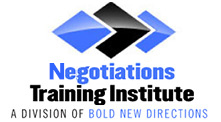Whether you are starting a new job or gunning for a promotion at your current one, it is always important to negotiate salary. Many people avoid salary negotiation out of fear, but you risk missing out on bigger financial opportunities when you avoid asking for a raise. Negotiating a better salary is something everyone will be forced to do at some point in their careers, so when the time comes it is important to approach the issue objectively. Here are a few important things to know and tips for getting the most out of your next salary negotiation.
Know Your Value
If you want to get the pay you deserve, it’s crucial to know what you’re worth before walking into the negotiation. This means doing some research to find out what the going rate is for a similar position in your industry and geographic area. Next, you need to make a list of what special skills, talents, and accomplishments you have received so your employer knows exactly what you are bringing to the table. If you want more money you need to convince them that you deserve it.
Resist Throwing Out the First Number
Oftentimes an employer or hiring manager might ask what your salary requirements are. If they do, you should say that they are based upon the position and the overall compensation package. If you throw out a number, you risk getting less than you could have gotten if the employer had a higher number in mind. Furthermore, the employer is likely to only pay you the minimum amount you require so let the salary ball remain in their court. If you are forced to give a number, provide a salary range that would be appropriate for that position based on your research.
Avoid Accepting the First Offer
Don’t be afraid to let the employer know that you want 24 hours to consider the offer. This gives you time to come up with a reasonable counteroffer and it lets the employer know that you aren’t willing to settle.
Understand Your Leverage
Your negotiating power is highly dependent upon your current employment situation. For example, if you are unemployed and applying for work, be prepared to accept slightly less than what you might want. If you are going for a promotion or a new job, you have a little more bargaining power because you are not desperate to accept the first offer.
Negotiate More Than Just Money
It’s important to understand that negotiating your salary doesn’t mean money alone. Your salary is more than just a paycheck. It encompasses a number of other perks and benefits such as vacation, flex-scheduling, professional training, healthcare, childcare, and tuition reimbursement. While dollar signs are certainly important, these other forms of compensation should also be considered as part of the negotiation.
